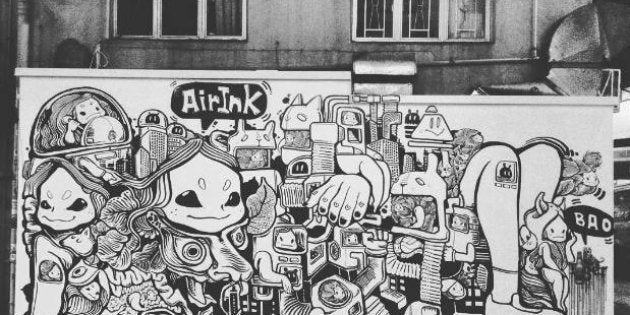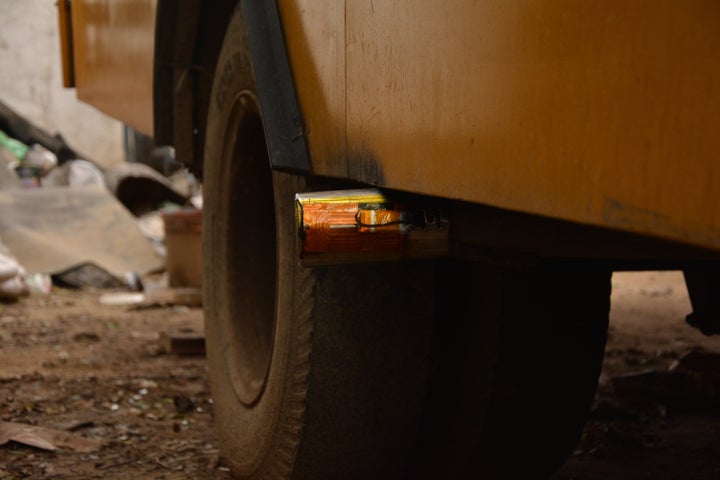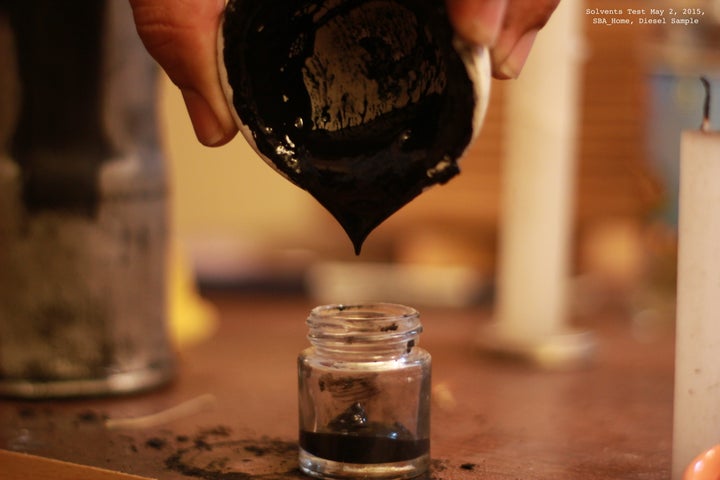
In the last year, authorities in Delhi have resorted to several methods to improve the poor air quality in one of the world's most polluted cities. The steps include banning old vehicles and larger diesel cars, the odd-even traffic restrictions and an environmental levy for trucks passing through the city.
An Indian start-up is taking an alternative approach to tackling air pollution by collecting harmful polluted air at its source, and then cleaning and recycling it to make paint and ink. "Instead of telling people to buy a new car to replace their old one, we're talking about a technology that can prevent pollution from going into the air and in our lungs," Graviky Labs co-founder Nikhil Kaushik said.
Headquartered in Bengaluru, Graviky Labs is headed by Kaushik, Nitesh Kadyan and Anirudh Sharma. Their device, called Kaalink, claims to be the first of its kind in the world in capturing polluting carbon from its source.
"At the end of the day, pollution is a pigment," Kaushik said. "From there, if you can re-purpose it to make art, it solves two problems in one go. It reduces pollution, and the byproducts ink and paint further lessen the use of chemicals."

Kaalink is a cylindrical device that can be retrofitted to a vehicle's exhaust pipe, and claims to capture as much as 93% of the pollutants emitted without affecting the performance of the engine. The carbon soot that has been collected is then processed to remove heavy metals and carcinogens, leaving a purified carbon-based pigment. This is then further processed and mixed with materials like oil to make inks and paints.
So far, Kaalink has been tested on cars, trucks and motorcycles, with side trials being held with diesel gensets as well. Graviky Labs has also developed a range of Air Ink products such as pens, markers, paints and ink, all made from carbon soot. The team says that 30 ml of their ink is equivalent to 45 minutes of car emissions.
This processing is as important as capturing the particulate matter. "For instance, if you collect garbage but don't process it, it ends up in huge landfills that you see around Delhi and Mumbai," Kaushik added. "We are not just trying to capture the pollution, but going a step further to repurpose it and complete the cycle."

Sharma, who has also invented the smart shoe Lechal to aid visually-impaired people walk, first conceived the idea while working as a researcher at the MIT Media Lab in Boston in 2013. The device was further developed over the next three years, and is currently being certified. The company finally plans to bring it out in the market by the end of 2016.
Graviky Labs argues that if implemented widely, the device can help in reducing vehicular pollution in cities considerably. Each device can be used for an average of 15 days, after which it will have to be cleaned at petrol pumps. "Unless it is deployed on a large scale and there is an entire ecosystem around it, it's effect will be minimal," Kaushik said. The lab is still working on improving the device's efficiency in capturing particulate matter, and getting it used on a large scale, especially in metropolises with heavy traffic.
Vivek Chattopadhyay, a researcher at the Centre for Science and Environment, says that the device could be different from existing diesel filters that reduce the particulate matter in emissions rather than capturing it, but still needs to undergo a certification process before being implemented.
The core idea is the capture of pollution, but Graviky Labs is also trying to work in an inter-disciplinary direction by combining technology with design. In May, it partnered with Tiger Beer for an innovative street art project Hong Kong, a city that faces an air pollution problem like Delhi's. Local artists used its air ink to paint walls in the city's Sheung Wan district."There is no better medium to connect to people than art," Sharma said. "Here we had our inks used as an antidote to the respiratory problems caused by air pollution."